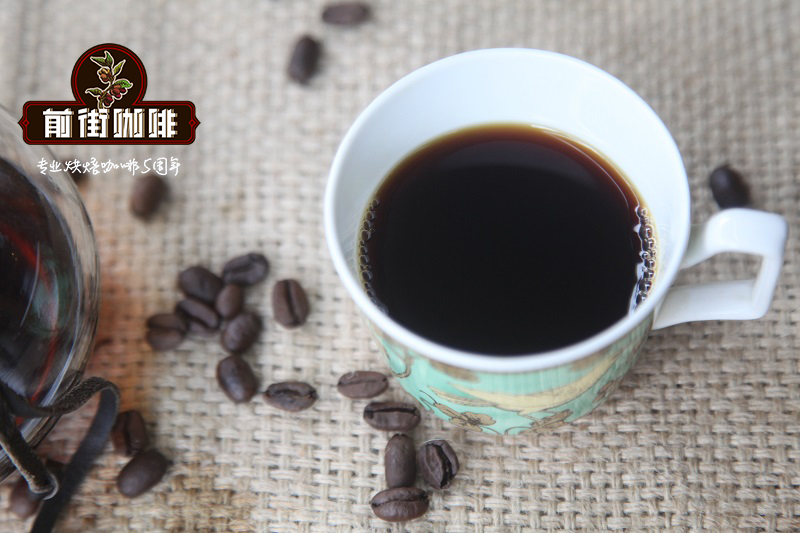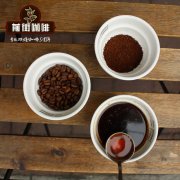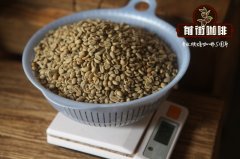Guardia Santa Paula Farm Coffee introduces smooth coffee beans

Country: Guatemala
Production area: Keban
Name of the farm: Santa Paula Farm
Farm owner: Oscar Schaps, Christian Schaps and Rony Asensio
Altitude: 1375 m
Variety: Kaddura, Kaduai
Treatment method: washing method
Appearance: .17-18 mesh
Flavor: tropical fruit flavor, uniform overall cup flavor, creamy smoothness in the middle, soft and harmonious sweet and sour changes in the aftertaste.
Located on a hill about 1375 meters above sea level near the town of San Pedro Carchaa in the Copan region, the Santa Paula farm was established in the early 1990s and has been producing good coffee for a century. The main varieties are Caturra, Catua í and Catimor, all of which grow in the shade to ensure a long-term stable ripening of coffee cherries, which produce about 750bags per year.
Coffee beans are grown in almost all areas of agricultural land in Guatemala. 98% of them are shaded by trees and are almost monopolized by Arabica beans. The main subvarieties are Bourbon, Tipica, Caturra, Catua í, Pache and Pacamara. Guatemala has high elevations and 300 different microclimates. Coupled with stable rainfall and fertile soil rich in minerals, it is ideal for coffee cultivation in Central American countries. Since the early 1990s, Anacaf é has taken the lead according to the characteristics of coffee, growth climate, soil quality and altitude. Eight different producing areas for the production of alpine hard beans (SHB) are: Ekat Nango Valley (the Acatenango valley), Antigua (Antigua), Attila (Atitl á n), Caban Rain Forest (Coban á n), Farrakhan Nice Plain (the Fraijanes plateau), Vicki Nango (Huehuetenango), New Oriental (Nuevo Oriente) and San Marcos volcanic area (San Marcos). The main harvest season is from December to March of the following year. Relatively high-altitude producing areas such as Vivette Nan fruit can be shipped as long as the harvest is completed and processed, usually during the period from April to July.
Important Notice :
前街咖啡 FrontStreet Coffee has moved to new addredd:
FrontStreet Coffee Address: 315,Donghua East Road,GuangZhou
Tel:020 38364473
- Prev

The coffee produced by the coffee planting introduction of the Concordia Farm in El Salvador is very sweet.
Country: El Salvador production area: El Salvador Fire Mountain Manor: Concordia Harmony Farm Farm owner: Expresso SA de CV Farm size: 19 small Coffee Farmers Coffee planting area: 34 ha altitude: 1250-1400 m Annual rainfall: 2500-2700 ha soil: volcanic clay shading tree species: 48 shade tree species Certification: Fair Trade Fair Trade
- Next

Introduction of Honey Coffee from adobe Manor in the Central Valley of Costa Rica Finca Las Lajas
Country: Costa Rica: central Valley Farm name: Finca Las Lajas Farm owner: Chacn Solano Family altitude: 1300-1500m Certification: Organic certified Variety: Kaddura, Kaduai treatment: honey treatment appearance: 17018 mesh Grade: SHB flavor: whole wheat biscuit aroma, milk cream smooth, cooked tea flavor, wind
Related
- Detailed explanation of Jadeite planting Land in Panamanian Jadeite Manor introduction to the grading system of Jadeite competitive bidding, Red bid, Green bid and Rose Summer
- Story of Coffee planting in Brenka region of Costa Rica Stonehenge Manor anaerobic heavy honey treatment of flavor mouth
- What's on the barrel of Blue Mountain Coffee beans?
- Can American coffee also pull flowers? How to use hot American style to pull out a good-looking pattern?
- Can you make a cold extract with coffee beans? What is the right proportion for cold-extracted coffee formula?
- Indonesian PWN Gold Mandrine Coffee Origin Features Flavor How to Chong? Mandolin coffee is American.
- A brief introduction to the flavor characteristics of Brazilian yellow bourbon coffee beans
- What is the effect of different water quality on the flavor of cold-extracted coffee? What kind of water is best for brewing coffee?
- Why do you think of Rose Summer whenever you mention Panamanian coffee?
- Introduction to the characteristics of authentic blue mountain coffee bean producing areas? What is the CIB Coffee Authority in Jamaica?

